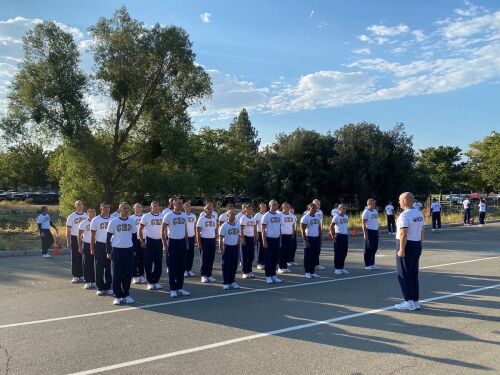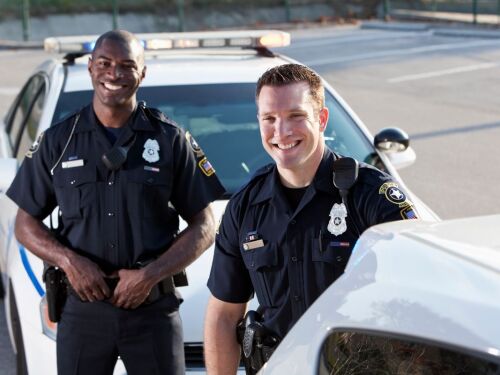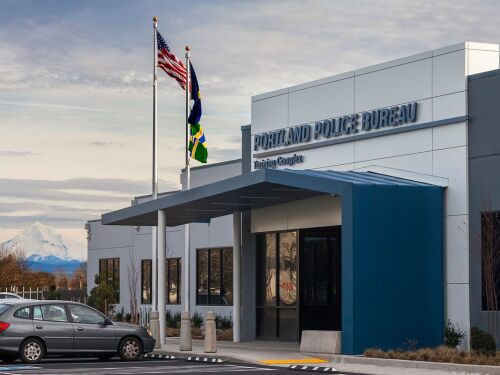Welcome to our new series, “Solutions for Modern Policing.” In the rapidly evolving landscape of law enforcement, challenges are inevitable. However, each challenge presents an opportunity for innovation, growth and progress. This series aims to explore these opportunities by delving into the most pressing issues faced by police departments today and highlighting the innovative solutions that are making a difference.
From recruitment struggles to community engagement, from technological advancements to leadership strategies, “Solutions for Modern Policing” will provide a comprehensive look at how various departments are tackling their unique obstacles head-on. Our goal is to not only share these success stories but also to offer practical insights and strategies that can be adopted by other agencies facing similar challenges.
Each article in this series will follow a problem/solution format, as we outline the issues at hand and the steps taken to address them.
The problem: Challenges in police recruitment
As a former police chief, I know all too well the frustration of recruiters within police agencies – enrollments for testing are down or inconsistently fluctuate, and stories run rampant of how it used to be “back in the day” when over 200 people would show up to test and compete for one or maybe two openings. Well, those days are most certainly over.
And while application numbers have dropped in total, what may be more alarming is the number of applicants who do go through the process only to fail due to questionable backgrounds, deficient skills necessary to do the job, and overall lack of fit for the profession.
What complicates an already complex issue are the calls to redefine the role of police in our society. All the while we struggle to balance being responsive to our communities with our traditional roles of protecting and serving. But while enforcing the law is merely one component of policing, it certainly is not all-encompassing, and having the right people with the right hearts and minds for the job is more important now than ever before.
As police departments strive to attract and retain new talent, some agencies are shifting away from traditional training models toward approaches that resonate better with Gen Z recruits.
In this episode of the Policing Matters podcast, host Jim Dudley speaks with Hank Prim, Supervisory Special Agent and State Law Enforcement Standards and Training Administrator in South Dakota, about South Dakota’s approach to law enforcement training, particularly the shift from high-stress, military-style academies to a more collegial and problem-based learning environment. Listen to the full episode here.
The solution: Rethinking recruiting practices
While serving as the chief of police in both Grand Junction, Colorado, and Denton, Texas, our teams took a long look at our existing recruiting and hiring practices and found that they mirrored, almost exactly, what so many other agencies were doing and had not changed in an alarming number of years. Despite decreases in applications, we’d not made any changes to those processes and somehow expected to improve our situation, nonetheless. It was, indeed, time for an evolution in recruiting.
Reassessing an entire recruiting process from start to finish takes work and commitment, and it also takes the ability and courage to challenge the status quo. Police agencies can sometimes be at odds with practices that are canonically accepted and rarely altered, and the inability to shift to a new approach can be met with resistance. Still, the effort can pay off, particularly if given the time to show forward progress. Here are the steps we took to accomplish this.
Step 1: Engaging applicants
While at the Grand Junction Police Department, potential applicants could submit a “virtual interest card” on our police website – however, that form, once filled out by the applicant, went to another department in the city and the only response was an automated email thanking them for their interest and advising how to apply. While certainly a good way to get prospective recruits on a list, it did nothing to engage them. It felt transactional, not relational.
In “The Infinite Game,” renowned author Simon Sinek gives an example of a young man by the name of Noah who has two jobs as a barista, both at different Las Vegas hotels. As Simon gets his coffee at one of the hotels, the Four Seasons, he strikes up a conversation with Noah, who proclaims to love his job. Inquiring further, Noah explains. In his work at the Four Seasons, Noah feels like his work matters, and that his bosses genuinely care about him and the value he adds to the experience of those staying at that hotel. He felt a part of the team, not just a number. This is the opposite of his experience at his other job, where no one asks about him and he simply clocks in, does the job, and clocks out.
We wanted our process to be more like Noah’s experience at the Four Seasons, where applicants felt like, as individuals, they mattered. So, we changed that part of the virtual interest card process altogether.
Instead of the virtual interest card going off into the ether, we set up, in part with other efforts, our adjunct recruiting team. This team was made up of members of our agency who were truly invested in our mission, who performed exceptional work, and who just, as they say, “got it.”
In forming that team, one of the goals was to serve as a liaison between applicants and the hiring manager within our agency. Under this new process, when the virtual interest card was submitted, it came to the hiring manager who then assigned that card to one of our adjunct recruiters. The adjunct recruiter would in turn reach out directly to the applicant by phone to introduce themselves as a representative of the agency and thank them for their interest. What followed was a discussion about the department, one that imparted information well beyond what could ever be found on a website, and to talk about the recruiter’s own experience working there.
Additionally, the recruiter would serve as a point of contact to answer any questions the applicant had about the agency, the area, or anything else they wished to know. Transparency and expressing mutual interest served as the foundation for the conversations, and that customer service level really helped elevate how we made our applicants feel during the process.
We didn’t stop there, however.
Step 2: Command staff involvement
When we held physical fitness testing for applicants, I and members of the command staff would show up to introduce ourselves to the applicants and get to know them, and then stay throughout the testing process to provide encouragement. They knew we were invested in them because we took the time to be there and stay there.
Step 3: Ride-outs with officers
Having a great front-end experience is one thing but ensuring that what looks good on the surface truly is as good as it seems is just as important. With that in mind, we encouraged applicants to conduct ride-outs with officers – and the officers who were our adjunct recruiters and field trainers served as outstanding ambassadors for the agency.
Each was versed in the importance of the customer service aspects of recruiting, answering questions honestly, and serving as exemplars of the good work our agency did as a whole.
Finally, the officers worked to determine an applicant’s “why” – why they applied there, what motivated them and why they wanted to be in the profession. After the completion of the ride out, the officer would submit a written report of his or her observations, which went into the candidate’s file. I can say with no hesitation that the officer’s report weighed heavily in hiring decisions because I trusted our staff to help select their future colleagues. I firmly believe we are all part of the hiring process, and that customer service is everyone’s responsibility.
Step 4: Streamlining the process
Fast forward a few years, and as the chief in Denton, Texas, we took the same time to look at our process and see where we had some opportunities. Applications had fallen as of late, and we knew we competed with every other policing agency in the Dallas-Fort Worth metroplex. Competing for generally the same pool of candidates was a daunting task, so we knew we had to figure out how we stood out differently and what made us unique.
Again, I go back to the customer service aspects that made us successful in Grand Junction. Looking at each step of the process, we looked to streamline what was an incredibly long and arduous journey for our applicants, one that took so long that we lost applicants routinely to other agencies based on time alone to get to that ever-elusive job offer. We had no system of a rolling testing option, and based on civil service laws, we were limited in what we could do. So, we chose to be creative.
We worked with our police officers’ association to alter our meet and confer contract to enable us to test more frequently, and after multiple conversations with the representatives of the association, it was obvious to everyone we all wanted the same thing – more cops on the streets without lowering standards. Everything else was just in the process. As a team, we pressed forward.
Step 5: Personalized applicant engagement
We began putting a personal touch on components of the process – I showed up to each testing date to address the applicants and express appreciation for their interest in our agency and talk a bit about my own “why” in policing. Instead of merely crossing our fingers and hoping most of the applicants show up, we instead created a personalized letter for each applicant and stayed in contact with them throughout the pre-testing process. Our numbers went up, not only for applications, but for attendance at the testing.
We set up individual executive interviews with applicants at the final stage of the process – one where we were able to dig in more as to ask questions like:
- Why the Denton Police Department?
- What motivates you personally?
- Where do you find support when you encounter challenges in your life?
- What do you think you can do to help keep our community safe – why you?
These were just a few questions, but it’s amazing when you get beyond the rote questions that we all see in interviews to ask questions that elicit answers more about the person, rather than the qualifications. I routinely say and firmly believe that we can train almost anyone to do the job, but we can’t train heart, ethics and passion for helping others.
Step 6: Continued focus on customer service
Customer service matters. And it matters more when we hire the applicants who make it through and continue to impress upon them the need for good customer service. If they feel like they’re enabled to make a difference in the field, to be empowered to make decisions and to grow in the process, then they’ll be better public servants. That’s customer service.
In “Unreasonable Hospitality” by Will Guidara, the author writes about the value of the experiences we have and how they shape our impressions of things. Not just businesses, or in the case of Guidara, award-winning restaurants, but also in every other place of business or organization with which we come in contact. How we treat people absolutely matters, and not just out in the field. How we treat our applicants matters. How we treat them once they’re employed matters.
Conclusion
I encourage each of you reading this to take an honest, objective look at your process – what’s working well, what’s not, and what you can do about it. Maybe more importantly, ask yourself what are you willing to do about it. If you’re content with the status quo, that’s what you’ll get out of it. But if you’re an early adopter of embracing something pretty special, well, the sky is the limit.
Next: Why wait to hear from your officers only when they’re exiting? Discover how retention interviews can foster a proactive culture, enhance job satisfaction and retain your top talent. In this video, Gordon Graham dives into strategies that make a difference today.












